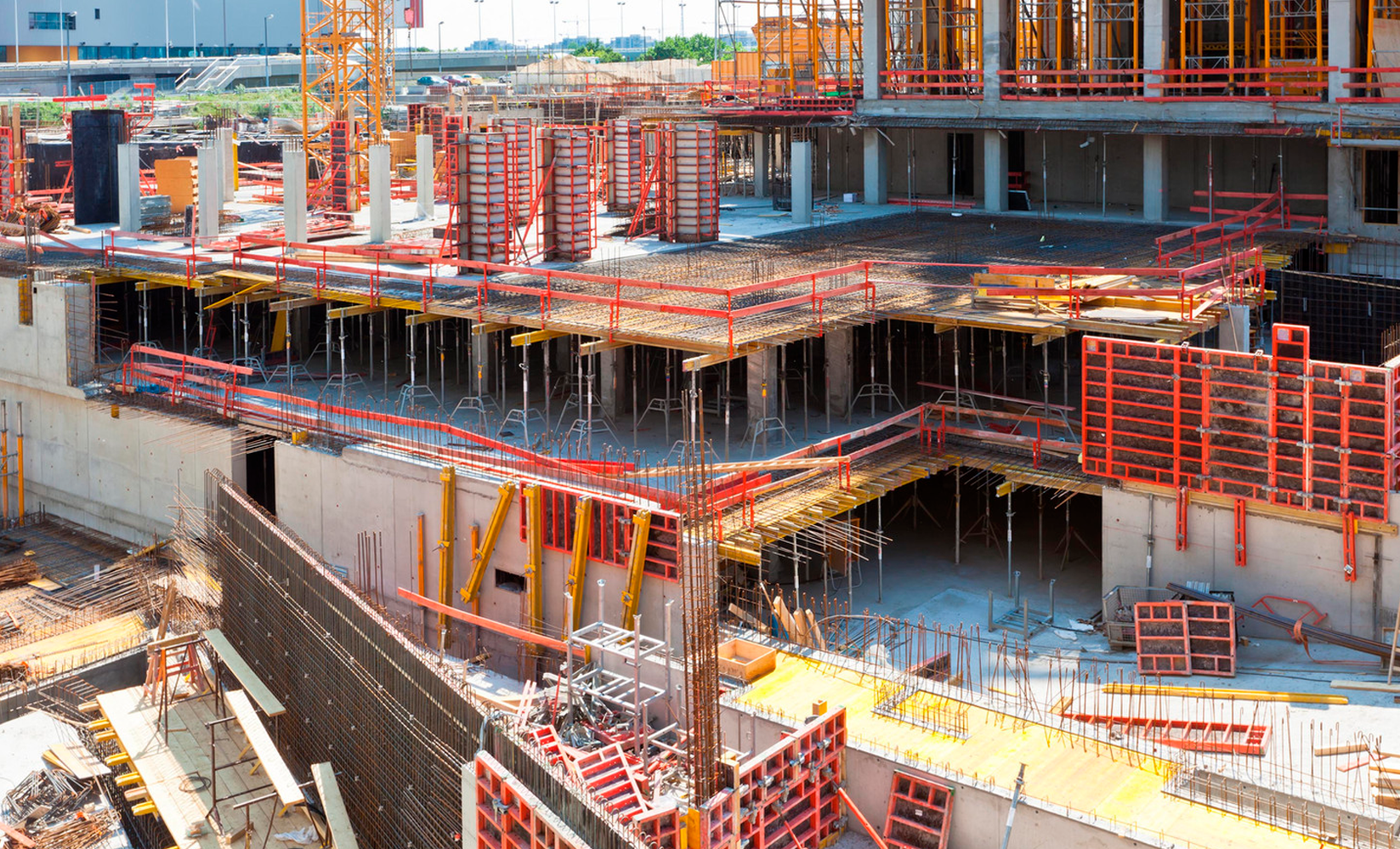Self-repairing concrete
The concrete is embedded with capsules that contain bacteria and nutrients inside. When water enters the capsules, the bacteria are activated and begin to feed, repairing cracks in the concrete by producing limestone.
Among other innovative solutions of this kind is the development of Korean scientists, who suggest adding capsules with a polymer that reacts to moisture and sunlight to concrete. Under their influence, the polymer increases in volume and fills cracks.
American scientists from Worcester Polytechnic Institute have proposed their own solution based on the use of bioconcrete. An enzyme is added to such concrete, which interacts with calcium carbonate crystals and releases CO2. As a result of these processes, the concrete becomes stronger and cracks are filled. A crack up to 1 mm wide can be repaired within one day in this way.
Flexible concrete
Richlite
Liquid granite
It is a special type of construction mix consisting of 70% marble chips, 30% special additives and decorative fillers. This compound is spray applied to a variety of surfaces including concrete, brick, stone and asphalt. When cured, this liquid forms a durable coating that gives the surface a durable and aesthetic appearance.
Liquid granite is an environmentally safe material, as its composition includes resins, natural marble chips and mineral fillers. This composite mixture is often used in finishing works and is used to create or cover individual interior elements.
Translucent concrete
During the manufacturing process, special transparent fillers, such as glass granules or microballoons, and polymer additives are added to the cement to improve its light transmittance. The result is a material that transmits up to 50% of light, making it suitable for creating translucent walls, ceilings and even floors, increasing the insolation of spaces. This material combines the qualities of concrete and glass: strength, durability, resilience and light transmission. It can be used to create decorative details such as columns, arches, staircases, which gives buildings a modern, refined look.
Sensitive materials
Luminous concrete
Brick that absorbs contaminants
Recycled steel
One of the most affordable building materials is recycled steel. Recycling steel requires 75% less energy than producing new steel from raw materials.
With the rising cost of fossil fuels, the use of recycled steel saves builders and homeowners a significant amount of money. Recycled steel retains its structural integrity as one of the building materials and can be used for a variety of purposes such as framing and structural support.
Geopolymer concrete
Geopolymer concrete construction material has several advantages over conventional Portland cement concrete, especially in terms of environmental friendliness, energy efficiency and durability. The use of industrial by-products such as dry ash, slag or silica reduces CO2 emissions during the production process of geopolymer concrete. This environmentally friendly method reduces the carbon footprint of the construction industry.
Such concrete is more chemically resistant, less permeable and has better fire resistance than conventional concrete. The material's increased mechanical strength and resistance to shrinkage improve the long-term structural integrity of buildings and ultimately reduce maintenance and repair costs.
Plant-based rigid polyurethane foam
The rigid foam of plant-based polyurethane building material, which is created from renewable resources including hemp, bamboo and kelp, is an environmentally beneficial insulation material. In addition to insulation, this building material offers other benefits such as heat resistance, sound insulation, and resistance to mold and pests.
By minimizing heat transfer through walls, ceilings and attics, rigid foam insulation helps reduce heating and cooling energy consumption. Its superior insulation properties help maintain an acceptable interior temperature while reducing the need for mechanical heating and cooling systems.
Because plant-based polyurethane rigid foam is hypoallergenic and non-toxic, people with allergies or sensitivities to synthetic insulation materials can safely use it.



